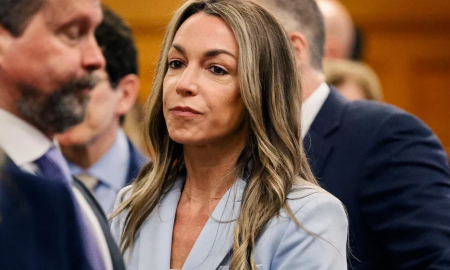
You Never Know When the Next Rainy Day Might Hit You. Keep That Emergency Fund Replenished!

An emergency fund is hard to accumulate, but very important in your financial tool kit. After hardships due to a medical emergency or job loss, this can be a lifeline. The economic fallout from the COVID-19 pandemic highlights the need for a safety net to meet financial distress.

Creator: Image Source | Credit: Getty Images/Image Source
According to the Federal Reserve, about 40% Americans are unable to cover unexpected cash expense exceeding $400 while 40% of households with annual incomes less than $40,000 suffered job loss in March 2020. Don’t wait for an economic rebound to save money. Despite facing income disruption or financial hardships, put aside cash for an uncertain future into an emergency fund. Some tips on making your emergency fund work for you:
Why an Emergency Fund?
Many have traditional savings account paying a couple of dollars when convenient or a dedicated and earmarked fund to save for down payment or maybe a dream vacation. Your rainy day fund is a safety net for several months’ living expenses kept in a safe, accessible account for withdrawal during emergency. Some experts recommend $1,000 to begin, while others advise a year’s living expenses. Ideally, emergency savings range from 3-6 months of living expenses. Only you can judge the current amount with readjustments over time.
The Dangers of Being Unprepared

Creator: LeoPatrizi | Credit: Getty Images | Copyright: Leonardo Patrizi
If short on cash, a single emergency adversely affects your financial health. The 2019 Federal Reserve report on U.S. household savings indicates those unable to cover an unexpected $400 expense with cash, use credit card balances or borrow money from friends / family. Habitually resorting to debt lowers your long-term financial health and results in indebtedness due to high-interest accruals, especially as credit card interest on balances exceed 16%.
Is it a Good Time to Begin Saving?
An emergency fund should grow before emergencies but the post-COVID financial crisis impacts all Americans, so save whatever possible for medical bills, essential expenses, and income losses. If six months’ living expenses is an unattainable goal now, don’t be disturbed and start small. Your goal is the destination, not a starting point. Successful saving is about habits, so focus on establishing this habit. During a crisis, work slowly towards a modest goal for a solid future footing.
Small Amounts Make a Difference

Creator: YinYang | Credit: Getty Images | Copyright: YinYang
Without a stable income, set aside small amounts after expenses are met every week. Without cash inflows, even a few dollars saved, is better than nothing. Consider saving money received via stimulus check or tax refund into the emergency fund, as well. Funds diverted from discretionary spends make a big difference to your fund. It is important to get started by saving a few dollars each week, as the sum adds up over time. As per experts, those with savings from $250 to $750, are less likely to be evicted, miss housing/utility payments, or receive public benefits after job loss, health issues, or large income drops.
Bottom Line
An emergency fund is there for you in an emergency. Personalize your savings goal in your fund using budget strategies that work for your financial situation. Establishing an emergency fund for growth over time enables security during uncertain times and better prepared for any financial future. How to stash your emergency fund, determining your savings goal, and alternatives when facing hardship are important decisions.
More in Investments & Savings
-
`
How Short-term Rentals Waste Food Worth $2.3bn Every Year
Food waste in short-term rentals is out of control. A new survey shows vacationers throw out more than $2.3 billion worth...
August 7, 2025 -
`
Use These Actionable ChatGPT Prompts to Kickstart a High-Paying Side Hustle
A side hustle can change your income game fast. It gives you extra cash and opens doors to bigger opportunities. Using...
July 31, 2025 -
`
5 Reasons Why You Should Choose Online Banking Over a Brick-and-Mortar One
Online banking changes the way you handle money from day one. It takes the usual stress out of managing accounts and...
July 25, 2025 -
`
How Changing Interest Rates Shape Stock Market Performance
Interest rates are the stock market’s quiet puppeteer. You won’t see them flashing on a trading screen. But they steer everything,...
July 17, 2025 -
`
Granny Pods: A Smart Housing Solution for Aging Loved Ones
Finding the right living arrangement for aging family members can be a challenging task. Traditional options, such as nursing homes or...
June 10, 2025 -
`
Useful Real Estate Strategies at Various Stages of an Investing Career
There is no one perfect investing approach, as real estate investors are aware. At various phases of your investing career, investigate...
May 2, 2025 -
`
Downsizing after Retirement is a Pain, but Here’s How You Can Go About It
Retirement needs extensive planning, and it is not just finances. Without proper plans for this next phase of life, chances are...
April 6, 2025 -
`
Break IKEA Rules and Try These Usual and Creative Furniture Hacks
Let’s be honest; we all love furniture items from IKEA be it the incredible day out traversing IKEA walkways, to ridiculously...
January 2, 2025 -
`
From Farm to Table: Who are the Stars Who Grow Their Own Food – Part I
This one is for those with Green thumbs, who just need an extra push to grow their food! While some celebrities...
January 1, 2025















You must be logged in to post a comment Login